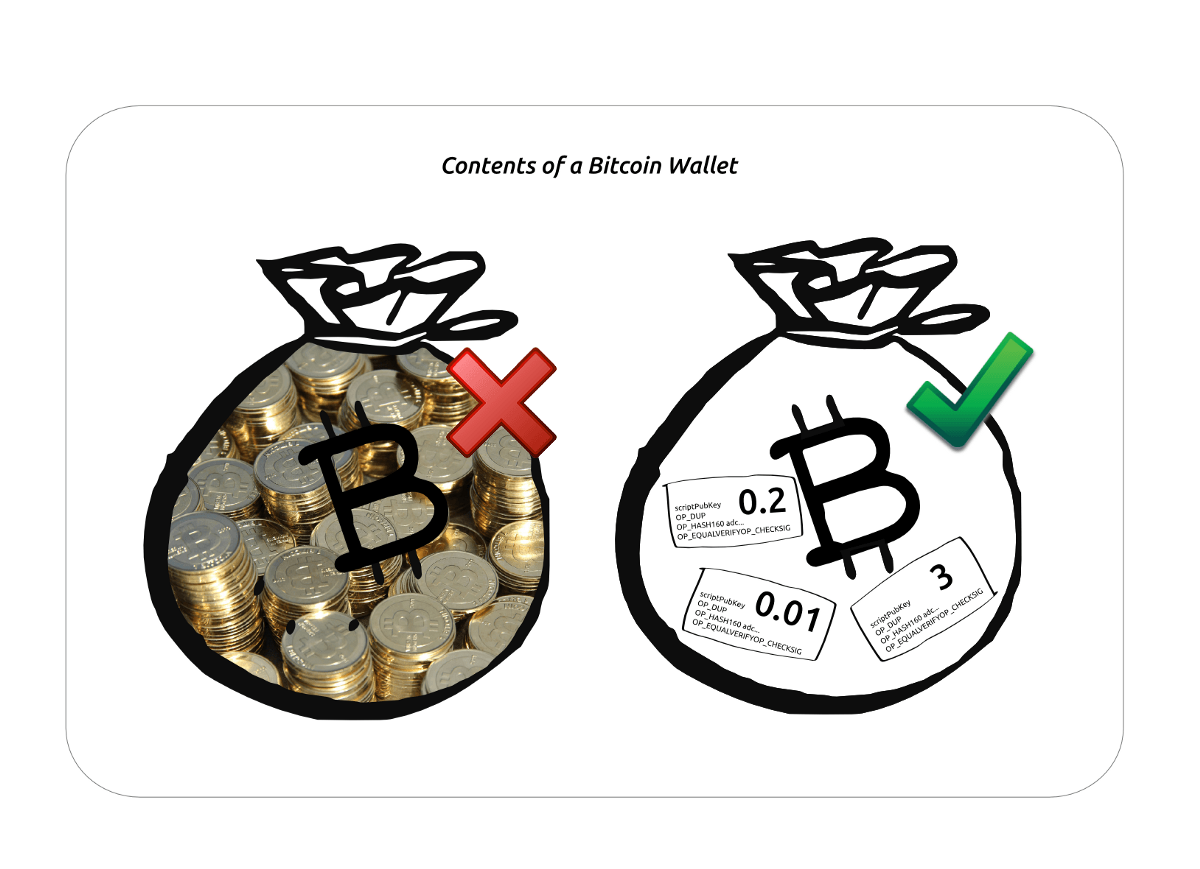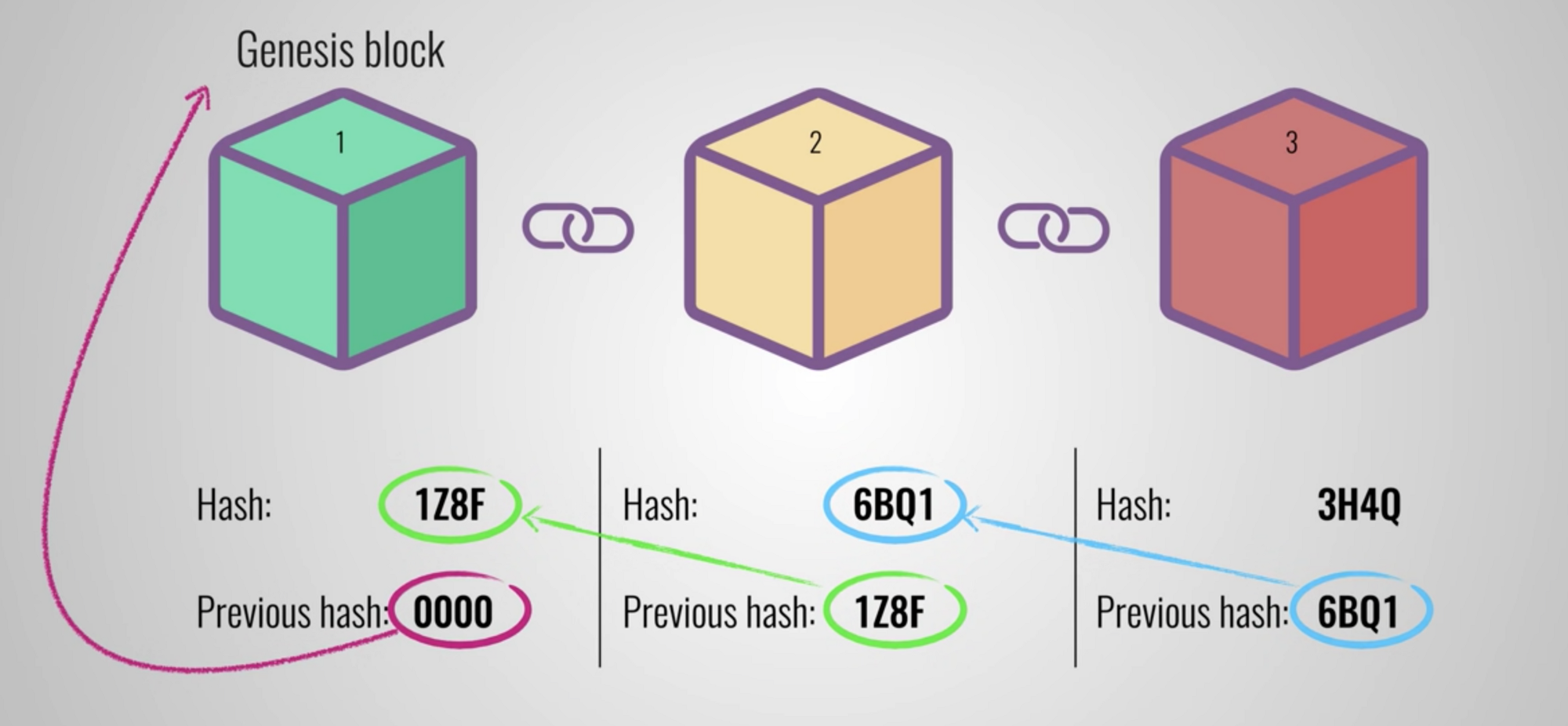How Bitcoin Works: P2P Empowerment
So far, we understand a Blockchain is essentially a time-ordered set of blocks that contain verified transactions on a shared record book that cannot be changed. So where does Bitcoin come in? One of the reasons we should care about Blockchain is that we care about property, and that payments are legit. So, how do we keep track of property, such as digital money, or “cryptocurrency” on the blockchain?
In Bitcoin, the value of the data in the Decentralized Ledger is money.
Bitcoin is public, open, borderless, and censorship-resistant.

Bitcoin is a transformative technology that empowers individuals to trade information through peer-to-peer transactions and lower the use of intermediaries like large banks. Trust among peers is made possible through cryptography and a reliable network of computers that adhere to a set of well defined rules, or protocol.
Think of a Bitcoin account as a pair of (PrivateKey + Address) that relies on well known secure cryptography. A randomly generated Private Key is also known as the Secret Key, and this is what you use when you spend bitcoin, so keep that extremely safe — like the most important password you can imagine. From here, the Private key is used to derive a public key, and further used to generate an Address. That ADDRESS is what you share with someone when you want to receive bitcoin. Both the secret key and your address are really long strings of characters that are unique, and that’s what keeps your property separate from someone else. It’s virtually impossible to guess someone else’s account address or private key. In fact, there’s an astronomically large number of possible addresses, so don’t think about ever running into someone else’s address. We’ll talk about how many that is in the future, but for now think of your private key as a unique grain of sand on earth, and then each earth being another grain of sand on another earth, and so on. That’s huge.
The amount of Bitcoin or BTC a person controls is represented by the number of Unspent Transaction Outputs (UTXO) assigned to their address. We know that address has control of those Bitcoin because in the future, only the person that has the Private Key associated with that address is able to sign a message that gets sent to the blockchain in order to spend it.

Let’s say Bob had a total of 8.5 Bitcoin. If he needed to make a payment of 5Bitcoin to Steve’s address, he would construct a message that says, “with my 8.5BTC, send 5 to Steve, but send about 3.4999 back to me. To verify this payment, send a tiny amount to the miner that verifies this (0.0001BTC)” Assume the transaction is validated by the network. Bob will then have almost 3.5 Unspent bitcoin, Steve, gets 5Bitcoin in his ‘control’ because only he has access to the private key associated with that address. There’s one more detail I left out for the sake of simplicity. When you make a purchase with a debit or credit card, a card service provider like VISA or Mastercard is taking a certain percentage of the purchase price in order to validate and process the transaction. But with Blockchain & Bitcoin transactions, how does that work?
Remember — we’re relying on DECENTRALIZED CONSENSUS to verify transactions. When you “send” a transaction to the Blockchain, you are broadcasting to the network your intent to spend bitcoin. In exchange for the work needed to verify this transaction, you offer a very tiny amount of BTC as a transaction fee. When you spend bitcoin, you might use a digital wallet like Edge — formerly known as AirBitz, an app that constructs a transaction message that is signed with your Secret Key. To the person using the wallet app, it looks like any other form of payment you’ve done online. The only difference is, you’re specifying the address of a person directly, and not VISA or MC, which makes this a PEER-to-PEER technology, avoiding the middleman. Nobody is going to try to block your valid transaction. In fact it’s quite the opposite. Those computers that are verifying your transaction? They are known as full nodes, and they are functioning as MINERS.

Credit: Simply Explained — Blockchain
Transactions are included in blocks. Blockchains store data in a structure that effectively timestamps the information through a digital verification process and changes to the data are stored in blocks. “chained” together by linking to the “hash” of the block before it, hence a “chain of blocks”. You can think of the hash as a “digital fingerprint” of the data. Even a tiny change has a large avalanche effect on the fingerprint, making it nearly impossible to fake a change, but very easy to identify if a bad actor is in the system. In this case “bad actor” does not refer to someone who a central authority deems is a criminal; we strictly mean a network participant that does not conform to the protocol of decentralized consensus. People are empowered by using a system that prefers “Consensus” — Rules without Rulers.
Now we’re getting to the true beauty of this technology. We can do business peer to peer, and know that MINERS are doing the “Proof of Work” to verify that every transaction ever recorded in history on the blockchain is valid. Here’s one thing to ponder until next time… where does Bitcoin come from? If you didn’t have any before, how did it exist? For now, here’s a hint: MINERS are REWARDED for doing the hard work, and those who use the Bitcoin are rewarded by empowering themselves through Blockchain. THAT is something to be thankful for.
Dan Emmons is owner of Emmonspired LLC, a Certified Bitcoin Professional, Certified Ethereum Developer, Full Stack Developer and Advisor on Cryptocurrency projects. He is also the creator of a Youtube Channel and iTunes Podcast called #ByteSizeBlockchain.
